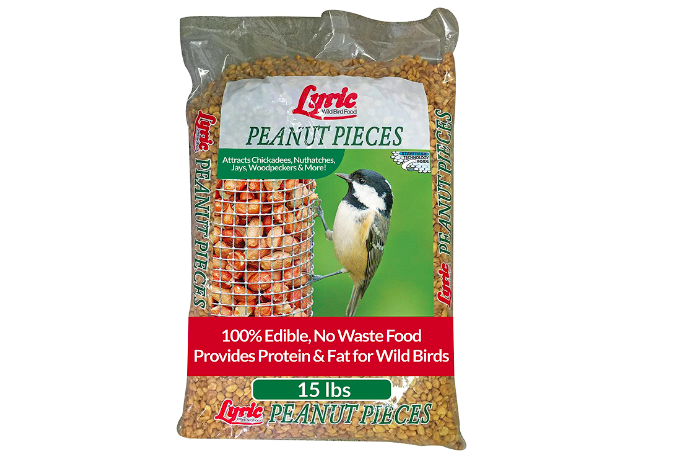Fall is one of my favorite times of year for bird feeding. Birds are starting to stockpile and build up energy for the winter. They rely more on feeders in the fall and winter, when natural food dies off and becomes more sparse.
You can take a few steps in your backyard to help birds survive and thrive until the weather warms up in the spring. Here are three tips I like to share with people when they ask me about bird feeding in the fall.
Disclaimer: Links found on this page are Amazon affiliate links. If you click an affiliate link and make a purchase, I might earn a commission. As an Amazon Associate I earn from qualifying purchases. (There’s no extra cost to you if you do this).
1. Stock up and Feed Birds High-Fat Treats (The Big Three)
When the temperature dips, your feathered friends will appreciate foods high in fats and protein. For this, I like to turn to what I call the fall and winter “big three” bird foods: Black oil sunflower seed, suet, and peanut bits. These are the essentials I offer this time of year. I see Northern Cardinals, Chickadees, Blue Jays, Nuthatches, Woodpeckers and Finches enjoying these high-energy foods.
Black oil sunflower seed appeals to a wide variety of birds and tends to be one of the more affordable bird seed varieties. A tube, tray, or hopper feeder are all great options for offering sunflower seed. I tend to offer a hopper, suet and tube feeder outside of my apartment.
My Birdseed Pick: Meadow Ridge Farms Black Oil Sunflower Bird Seed

I love suet for bird feeding. It’s an easy way to draw in woodpeckers on the regular. Suet is made of hardened animal fat. It’s an appealing energy source for birds in the fall and winter.
Suet is also cheap. It costs $1 to $5 for a cake of it, which usually lasts me for a couple of weeks. You can also buy suet logs for a tree log feeder. The cheapest and easiest way to offer suet is with blocks in a suet cage.
My Suet Pick: C&S No Melt Suet Dough Delights for Wild Birds

Peanuts are high in protein and fat – essential and important for birds in the winter. It’s become one of my favorites to offer up this time of year. I have the highest variety and number of birds at my station when I’m offering peanut bits in a separate feeder.
Note: Buying regular peanuts at your grocery store won’t work for bird feeding. The peanuts we eat tend to have salt and oils that are no bueno for our feathered friends.
My Peanuts Pick: Lyric Peanut Pieces

2. Buy a Heated Bird Bath

Want to know the secret to attracting more birds to your yard? It’s not about food. Focus on offering water in a bird bath.
A heated bird bath is especially welcome when it’s cold out and lakes/ponds are frozen. Open water is hard to come by!
Related Content: 5 Proven Ways to Attract Cardinals to a Feeder
3. Clean Your Bird Feeders

Now is a great time to clean your bird feeders (and bird baths) before the long winter. The Cornell Bird Lab recommends you continue cleaning them every two weeks. Here are the quick steps:
1. Take your bird feeders apart
2. Scrub them out with hot water and dish soap
3. Rinse thoroughly
4. Soak your feeder in a 9 part water, one part bleach solution (for wooden feeders: use vinegar instead of beach)
5. Rinse thoroughly again
6. Allow the feeder to air dry
Related Content: How to Save Money While Bird Feeding
Remember, you should be cleaning your feeders every few weeks year-round to keep things presentable and disease-free for your birds.
With these three tips, you’re sure to draw in and help a lot of birds when they need your help the most…And you can enjoy the beauty of nature while staying warm indoors this winter!
Sources and further reading:
